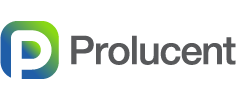With an incredibly competitive market, finding and engaging top talent is difficult.
While the nursing shortage has constrained hiring efforts for years, the pandemic certainly added another layer of complexity to the ‘war for talent’. Despite the fact that many contributing factors are beyond your control, several immediate changes can be made to put your organization in a stronger position to attract high-quality candidates.
1. See it through a new lens.
Reviewing your current hiring process from the candidate’s perspective is one step to overcoming this challenge. A complicated hiring process can create barriers that frustrate and quickly drive away job seekers. Providing a great candidate experience not only reflects your brand and culture, but it’s also a powerful component in attracting and converting top talent.
A positive candidate experience starts with a well-organized and easy-to-navigate career site. Making it exceedingly easy for candidates to find and engage with specific opportunities in your organization is critical in creating an edge in your hiring efforts. Adding a modern user interface to create an incredible visual experience captures candidates’ attention and makes a remarkable first impression. Most importantly, develop a system to redirect candidates to other viable opportunities and stay engaged and connected as they continue their job search.
Here are some other considerations that will help you enlarge the candidate funnel: Typical job search engines are frustrating for candidates. They can be very difficult to effectively filter, failing to provide candidates with job opportunities that are well matched to their interests and job characteristics.
2. Create a curated job search with an array of easy-to-use filters that offer a “shopping-like” experience to quickly and accurately connect and focus job seekers on the right job(s).
Candidates are easily frustrated by a search that delivers volumes of poorly matched job postings. Further, candidates whose skills and interests are mismatched are difficult to redirect to more appropriate jobs. Oftentimes, they get eliminated from consideration in the hiring process or move on to another employer.
From job titles and locations to license requirements and experience levels, the right set of filters allows candidates to “self-qualify” for the role that is the best fit. Candidate-specific work and schedule preferences, such as work commitment, shift, and work hours, are also essential filters for job seekers.
Considering the number and variability of job attributes that candidates are interested in, it’s easy to see why a disorganized and clunky career site can cause candidates to be overwhelmed and lose interest.
3. Standardize job posting content to draw interest from and engage with the best candidates for the role.
A clear and well-crafted job posting could be the difference between attracting average candidates and attracting great candidates. Developing conversational and candidate-centric content will inspire the right candidates to apply. Candidates looking for a new role may have viewed 100s of postings from various career sites so make sure yours stands out!
Remember, job postings are like advertisements, designed and written to attract attention, so keep them concise. While detailed job descriptions are of interest to professional candidates, consider shorter job posts that highlight the most important details of the role and embedding links to guide them to the full job description. Providing links will drive candidates to your career site and give you the opportunity to show off your brand, culture, and the overall benefits of working for your organization.
On a related note, to connect faster with job candidates, make sure that there are a limited number of “required” data elements in your application process. Candidates may hesitate to provide lots of personal information without knowing more about the employer and specific position. The ability to upload the resume is ideal, but make sure that the application does not duplicate information in the resume.
Lastly, consider an internal audit of existing job postings. Maintaining a uniform structure ensures all job posting content is consistent and on-brand. It can also improve the efficiency of your hiring process!
Attracting quality candidates is the first step, but keeping them engaged builds stronger relationships and boosts conversions.
4. Have a strong candidate engagement (and re-engagement) strategy through all stages of the hiring process to keep candidates motivated and moving forward.
Use timely and personalized touch points through a number of communication channels to build a strong relationship. In doing so, candidates will be less likely to lose interest and start searching elsewhere.
Your talent team should have their workflow automated in a way that they can easily track each candidate at each stage in the hiring process. This also allows leadership to monitor candidate flow and ensure that hiring is a top priority for managers and executives.
And remember – just because a candidate isn’t a fit for the first job they applied for, doesn’t mean they won’t be a fit for other roles. Maintain a relationship with past candidates who may not have been hired initially but have a great skillset for other positions. Building a “human-centered” connection allows you to easily reengage and redirect them to new opportunities.
And, by all means, do not let previous candidates get lost in the dreaded “black hole” of your Application Tracking System (ATS). This is a rich pool of talent you can easily and cost-effectively source from and should not ignore.
As an added bonus, leveraging technology that focuses on the applicant and not the application gives your Talent Acquisition team the power to quickly match previous applicants to new or future roles they qualify for. (To note, this powerful functionality is a differentiator with Prolucent.)
Building your talent pipeline is difficult, especially if you’re recruiting in the same places year after year.
5. Leverage a pipeline of talent you already know
An alumni network is an excellent trusted resource for recruiting nurses and other healthcare talent. Tapping into this robust pool of known talent can bring attention to open positions faster, leading to filling vacancies quicker. With this new resource, identifying candidates for highly-skilled or hard-to-fill roles may also become easier.
Prolucent expands access to new graduates through our affiliate partnerships with 300+ nursing schools.
Encourage your current employees to be advocates (and recruiters) for your organization as well. They can connect and engage with fellow alumni, even those that may not be actively searching for a new role. Even better, reward employees for their referrals with an official employee referral program. According to The Society for Human Resource Management (SHRM):
“Employee-referred new hires tend to be better performers than nonemployee-referred new hires and to stay with their organizations longer.”
Re-recruiting staff who left your organization or took a break from working during the pandemic is another effective strategy. Henry Ford Health, who rehired 25% of nurses that left during the pandemic, is an excellent example of success. Known as “boomerang employees”, this recruitment strategy involves engaging and rehiring former employees. This can result in a win/win for both sides. These candidates are already familiar with the culture and expectations of your health system and you gain an employee who needs minimal training. Further, according to Glassdoor, “companies can cut costs by up to 50 percent per hire by employing a boomerang over a typical applicant.”
Now that the supply and demand curve has changed and travel opportunities have decreased, many travel nurses are seeking the stability and perks of full-time employment.
6. Convert your travelers into permanent employees.
Travel nurses assigned to work at your health system already know the culture of the organization, understand expectations, and are familiar with their unit. They can also bring very valuable characteristics to your team – they know how to be flexible, they easily adapt to change, and they recognize being a team player is a must. Make sure, however, to follow the correct procedures as you determine the level of interest in transitioning to a full-time employee if a staffing agency is involved.
Small Changes for Big Impact
According to the 2023 NSI National Health Care Retention & RN Staffing Report, the average number of days it takes to recruit an experienced nurse to fill a vacancy (referred to as the RN Recruitment Difficulty Index) is currently 95 days and it “… is projected to remain elevated…“.
Finding innovative ways to expand your talent pipeline faster and accelerate hiring is key to reducing your time-to-fill rate however, with regular reviews of each step in your hiring process, you may uncover several simple adjustments you can make to ensure you reach your recruitment goals

